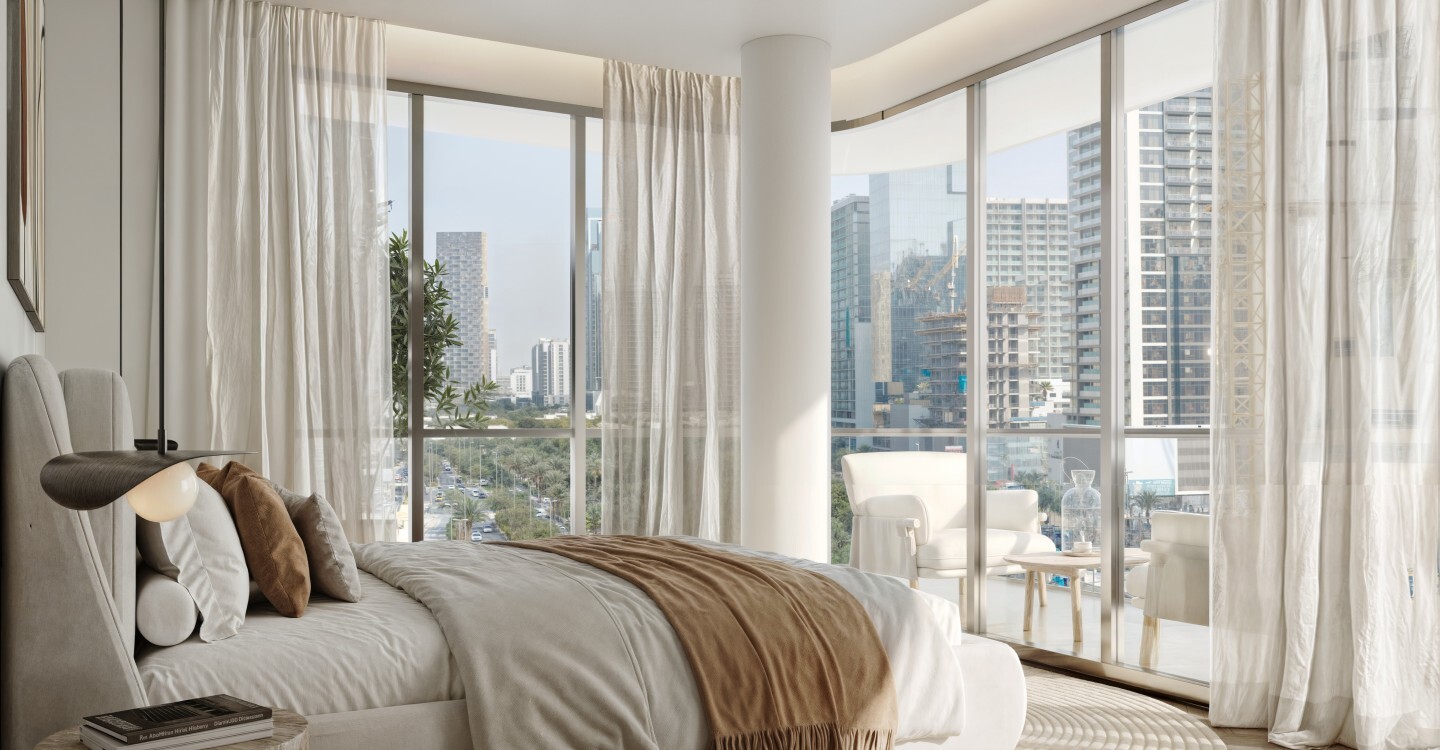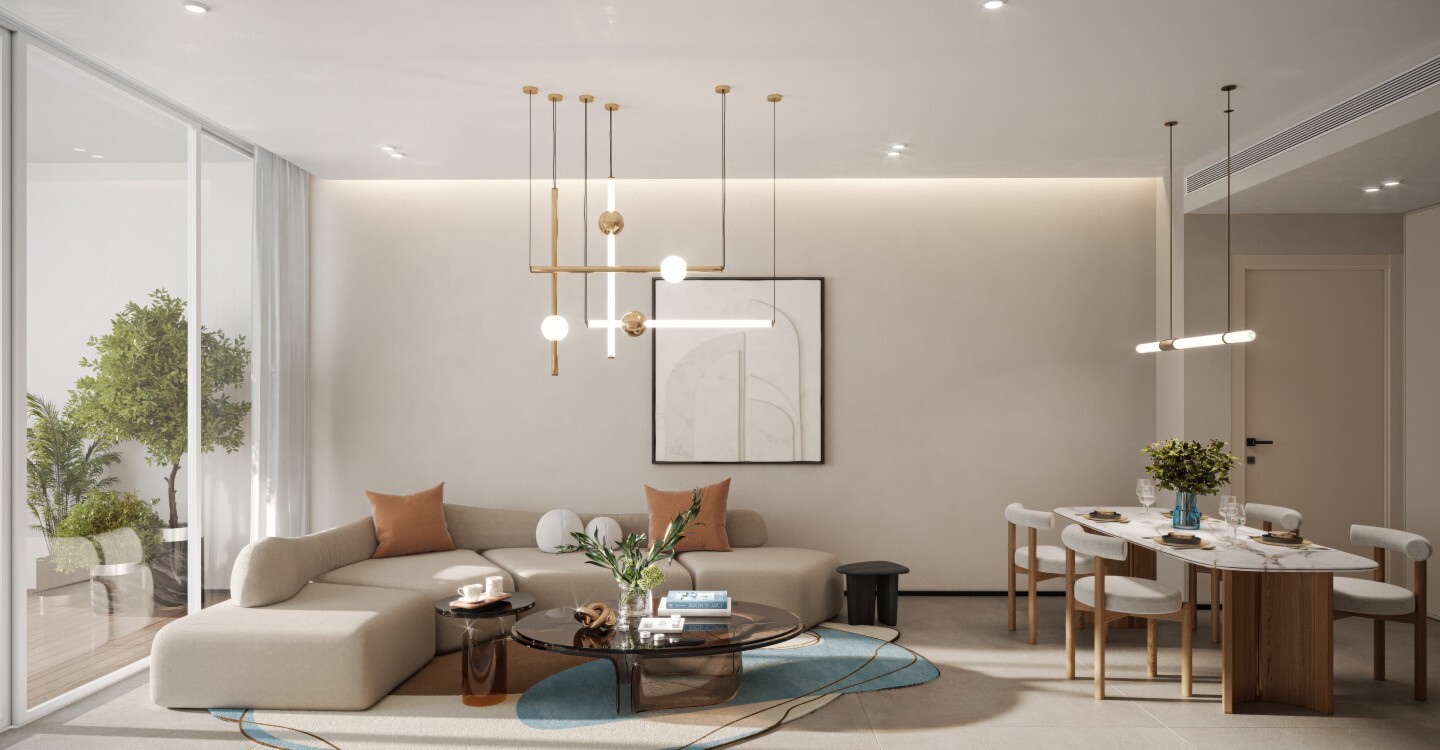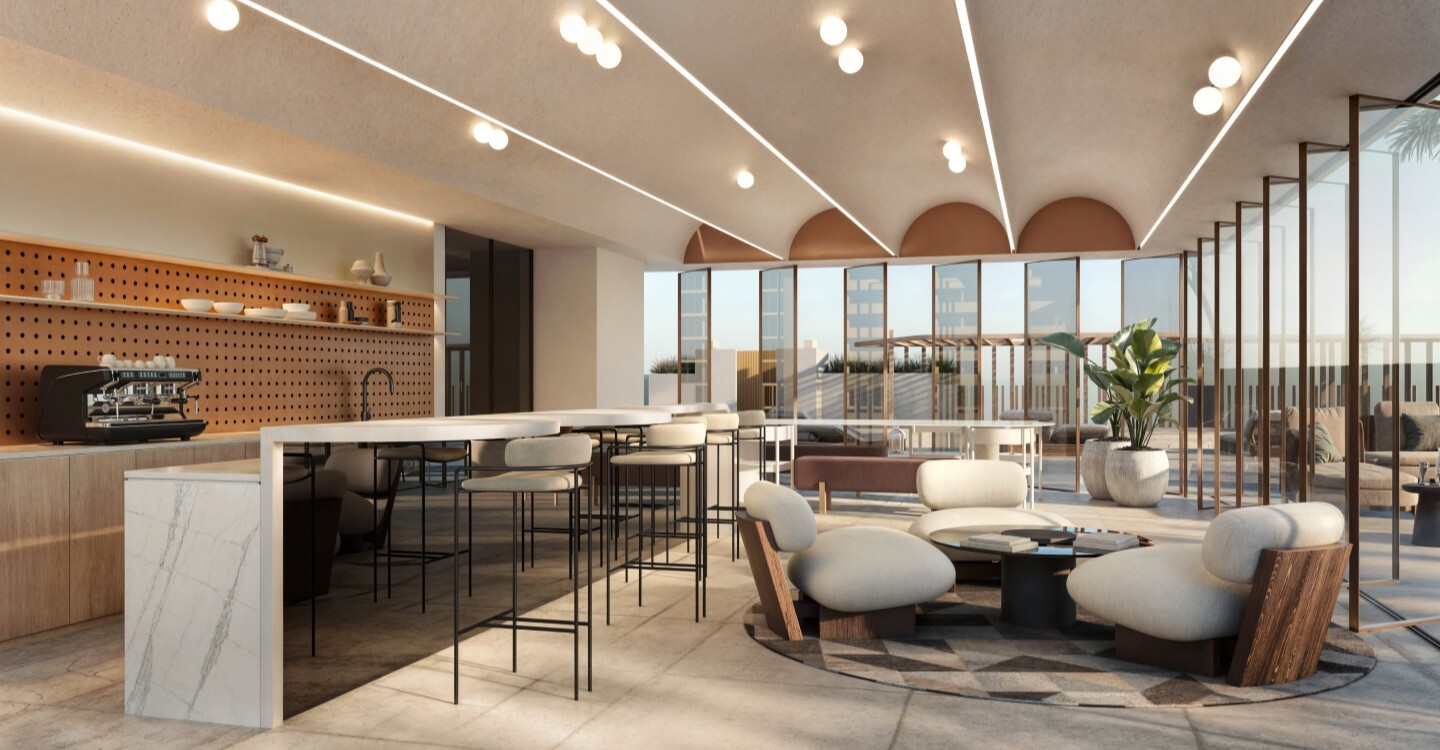Some spaces linger in memory. Not because of the furniture, or the view, but because of how they made us feel.
Calm, inspired, grounded. It's an emotional response triggered by deliberate choices in layout, light, texture, and tone.
These aren’t superficial details, they’re the tools of emotional architecture.
Great design speaks to the senses before it speaks to the eye. And when it’s done right, we don’t just see beauty, we experience it.
Calm, inspired, grounded. It's an emotional response triggered by deliberate choices in layout, light, texture, and tone.
These aren’t superficial details, they’re the tools of emotional architecture.
Great design speaks to the senses before it speaks to the eye. And when it’s done right, we don’t just see beauty, we experience it.
Emotional Architecture: Design That Resonates

A space that feels like a sanctuary. A room that energizes without overwhelming. These are emotional outcomes, shaped by delicate, often invisible design decisions.
For instance, a hallway lined with warm oak paneling might offer a sense of familiarity, while a marble-clad powder room, cool and echoing, evokes refinement and poise. Designers don’t just arrange furniture, they choreograph feeling.
Thoughtful homes today blend these emotional cues with architectural discipline. Soft curves on walls signal ease. Open-plan layouts, punctuated by stone islands or floating staircases, create rhythm and release. Even the distance between seating elements influences how freely a space breathes.
For instance, a hallway lined with warm oak paneling might offer a sense of familiarity, while a marble-clad powder room, cool and echoing, evokes refinement and poise. Designers don’t just arrange furniture, they choreograph feeling.
Thoughtful homes today blend these emotional cues with architectural discipline. Soft curves on walls signal ease. Open-plan layouts, punctuated by stone islands or floating staircases, create rhythm and release. Even the distance between seating elements influences how freely a space breathes.
Colour: Painting with Emotion
Colour influences us instantly, often unconsciously. At Val by KASCO, tones of sand, aqua, and pearl evoke a kind of coastal serenity, like a breeze you can’t quite see but can feel. Paired with white oak floors and pale terrazzo accents, the space becomes a canvas of stillness.
In contrast, Lume embraces richer, moodier hues: clay, oxblood, charcoal. These colours cocoon the senses, making a living room feel like a place to linger after sunset, wine in hand, music low.
Colour works best when layered, matte wall finishes against glossy tiles, a rust-toned velvet headboard framed by linen curtains. The interaction of textures gives colours emotional weight, grounding abstract tones in real-world intimacy.
In contrast, Lume embraces richer, moodier hues: clay, oxblood, charcoal. These colours cocoon the senses, making a living room feel like a place to linger after sunset, wine in hand, music low.
Colour works best when layered, matte wall finishes against glossy tiles, a rust-toned velvet headboard framed by linen curtains. The interaction of textures gives colours emotional weight, grounding abstract tones in real-world intimacy.
Light: The Mood Setter

Light shapes emotion with quiet power. A skylight that traces daylight across a polished concrete floor doesn’t just illuminate, it animates the space, creating a shifting dialogue between material and shadow.
Natural light has physiological benefits, it supports circadian rhythm and emotional regulation, but it also creates mood. A sunlit breakfast nook, awash in golden light filtered through sheer flax curtains, can feel like a daily ritual in mindfulness.
Even artificial lighting has a tactile quality. Brass sconces with hand-blown glass shades offer a gentle glow that mirrors candlelight. Backlit mirrors or under-cabinet lighting can gently lift a space without disrupting its calm.
Natural light has physiological benefits, it supports circadian rhythm and emotional regulation, but it also creates mood. A sunlit breakfast nook, awash in golden light filtered through sheer flax curtains, can feel like a daily ritual in mindfulness.
Even artificial lighting has a tactile quality. Brass sconces with hand-blown glass shades offer a gentle glow that mirrors candlelight. Backlit mirrors or under-cabinet lighting can gently lift a space without disrupting its calm.
Texture & Material: The Language of Touch
Texture isn’t decoration, its memory made tangible. It tells a story before a single word is spoken.
Velvet, for example, signals indulgence. Its dense pile captures light in gradients, shifting with movement and adding layers of depth. Velvet-lined cushions or headboards suggest intimacy, drawing you in with visual softness. Historically associated with nobility, it carries an emotional legacy of richness and reverence.
Silk is different, cool to the touch, fluid in its drape. Used in accent pillows or wall panels, silk introduces a sense of elevated refinement. It catches light with a delicate shimmer, adding moments of quiet brilliance.
Velvet, for example, signals indulgence. Its dense pile captures light in gradients, shifting with movement and adding layers of depth. Velvet-lined cushions or headboards suggest intimacy, drawing you in with visual softness. Historically associated with nobility, it carries an emotional legacy of richness and reverence.
Silk is different, cool to the touch, fluid in its drape. Used in accent pillows or wall panels, silk introduces a sense of elevated refinement. It catches light with a delicate shimmer, adding moments of quiet brilliance.

But luxury doesn’t require opulence. Linen, with its raw, imperfect weave, evokes honesty and breathability. It creases with use, and that imperfection adds soul. Wool, in chunky knits or flat-weaves, brings a grounded warmth to modern rooms. Burnished brass glows with history, while brushed stainless steel adds clarity and precision.
At Lume, materiality is a symphony: hand-trowelled plaster walls meet stone counters and ribbed wood cabinetry, creating a tactile rhythm that beckons touch.
And then there’s Society House, Dubai Downtown, a study in how bold luxury can be both expressive and deeply livable. Its interiors layer is marble, brass, and soft gold finishes with rich, tactile depth. Imagine entering the lobby: your footsteps muted by plush patterned carpets, your eyes drawn upward by veined marble columns that shimmer slightly under sculpted lighting. The walls carry quiet confidence, sleek, reflective, never cold.
In the lounges, jewel-toned velvet seating contrasts with structured lines and polished stone, creating a perfect tension between softness and strength. One resident joked, “It’s the first place I’ve lived where even the silence feels designed.” And it’s true, Society House doesn’t just look like somewhere you want to be. It feels like somewhere you already belong.
At Lume, materiality is a symphony: hand-trowelled plaster walls meet stone counters and ribbed wood cabinetry, creating a tactile rhythm that beckons touch.
And then there’s Society House, Dubai Downtown, a study in how bold luxury can be both expressive and deeply livable. Its interiors layer is marble, brass, and soft gold finishes with rich, tactile depth. Imagine entering the lobby: your footsteps muted by plush patterned carpets, your eyes drawn upward by veined marble columns that shimmer slightly under sculpted lighting. The walls carry quiet confidence, sleek, reflective, never cold.
In the lounges, jewel-toned velvet seating contrasts with structured lines and polished stone, creating a perfect tension between softness and strength. One resident joked, “It’s the first place I’ve lived where even the silence feels designed.” And it’s true, Society House doesn’t just look like somewhere you want to be. It feels like somewhere you already belong.
Spatial Flow: Designed for Movement
Movement within a space should feel effortless. Not just physically, but emotionally. A good layout knows when to pause, when to open, and when to draw in.
Open kitchens that bleed into lounge areas encourage presence and connection. Floating staircases bordered by glass lend vertical rhythm without heaviness. Pocket doors allow a room to be either intimate or open in a single, graceful shift.
Even the transitions underfoot, from tile to wood, or from rug to stone, gently guide how we move. Design isn’t stillness; it’s choreography.
Open kitchens that bleed into lounge areas encourage presence and connection. Floating staircases bordered by glass lend vertical rhythm without heaviness. Pocket doors allow a room to be either intimate or open in a single, graceful shift.
Even the transitions underfoot, from tile to wood, or from rug to stone, gently guide how we move. Design isn’t stillness; it’s choreography.
Proportion & Scale: Quiet Balance

A well-proportioned space feels instinctively balanced. The ceiling isn’t just “high,” it’s attuned to the human scale. The coffee table isn’t just cantered; it’s positioned to foster dialogue.
These aren’t visual tricks, they’re comfort in architectural form.
Tall verticals, like arched thresholds or full-height mirrors, draw the eye upward and expand emotional space. Lower furniture in wide rooms restores intimacy, anchoring the mood with intention.
The harmony feels effortless, yet its impact is profound.
These aren’t visual tricks, they’re comfort in architectural form.
Tall verticals, like arched thresholds or full-height mirrors, draw the eye upward and expand emotional space. Lower furniture in wide rooms restores intimacy, anchoring the mood with intention.
The harmony feels effortless, yet its impact is profound.
Memory & Identity: The Personal Connection

Some homes live in our memory long after we’ve left them. They’re not just styled, they’re storied.
A bathroom tiled in jade Zelig might spark a memory of a Moroccan courtyard. A gallery wall in a narrow hallway can turn daily passage into personal ritual. Every space becomes meaningful when it reflects a part of ourselves.
Val speaks to those who find elegance in restraint, minimalist, composed, elemental. Lume appeals to the expressive, with its layered hues and rich tactility.
A friend once described her home as “an extension of my favourite sweater: oversized, imperfect, and full of stories.” She had thick wool thrown on every armchair, hand-stitched leather stools by the fireplace, and soapstone counters weathered from years of use. It wasn’t flawless, but it was unforgettable.
Falling in Love with Design
Design doesn’t demand our attention. It earns our emotions. And when it resonates, it lingers, long after the room is empty.
A bathroom tiled in jade Zelig might spark a memory of a Moroccan courtyard. A gallery wall in a narrow hallway can turn daily passage into personal ritual. Every space becomes meaningful when it reflects a part of ourselves.
Val speaks to those who find elegance in restraint, minimalist, composed, elemental. Lume appeals to the expressive, with its layered hues and rich tactility.
A friend once described her home as “an extension of my favourite sweater: oversized, imperfect, and full of stories.” She had thick wool thrown on every armchair, hand-stitched leather stools by the fireplace, and soapstone counters weathered from years of use. It wasn’t flawless, but it was unforgettable.
Falling in Love with Design
Design doesn’t demand our attention. It earns our emotions. And when it resonates, it lingers, long after the room is empty.
